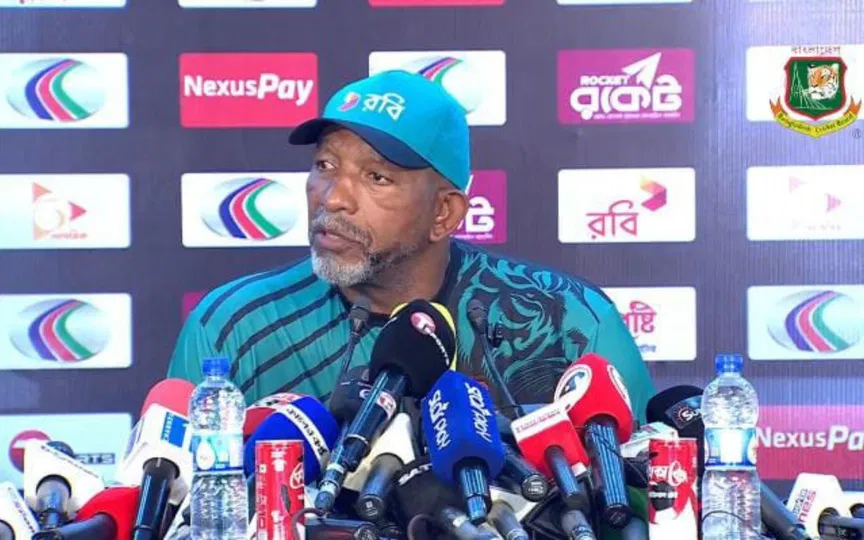![Mirpur produces unusual wicket for 1st ODI [Source: @world_choker/X.com]](https://onecricketnews.akamaized.net/parth-editor/oc-dashboard/news-images-prod/1760790889590_Bangladesh_West_Indies_Mirpur_Pitch.jpg?type=hq) Mirpur produces unusual wicket for 1st ODI [Source: @world_choker/X.com]
Mirpur produces unusual wicket for 1st ODI [Source: @world_choker/X.com]
The pitch at the Sher-e-Bangla National Stadium in Mirpur grabbed all the attention during the first ODI between Bangladesh and the West Indies. Instead of a normal wicket, Mirpur staff have used unique black soil.
As Bangladesh walked out to bat first in the first inning, the initial look at the pitch left critics and fans stunned.
The pitch had an unusually black surface, darker than what is normally expected in ODI wickets, and thus had a visually appealing and near-intimidating look.
Why did Bangladesh use black soil for the Mirpur pitch?
West Indies coach Darren Sammy earlier admitted that he had never seen anything like it before and will need time to assess the conditions. However, Bangladesh coach Phil Simmons insisted it was just a “normal Mirpur wicket.”
From the home side’s perspective, the black soil pitch could be an intimidating move. This type of surface retains moisture and elasticity. They also offer low, slow bounce, making them favourable for spinners who can extract significant turns.
Bangladesh, who had a good spin bowling attack, probably decided to play to their strength. The black surface may not just be cosmetic; it could play a real role in how the ball behaves under lights and during long periods of play.
However, with black soils so rare these days, whether this move is ethically right or not remains to be seen.
On the other hand, ICC will likely keep a close watch on how the first ODI pans out. If the conditions are found unsatisfactory, the Mirpur ground could be fined with a demerit point.
Bangladesh’s ‘black soil’ gamble backfires
Meanwhile, Bangladesh fell hard in the pit they dug for the West Indies. Batting first in the 1st ODI, the hosts were bowled out for just 207 runs despite Towhid Hriody (51) and Mahidul Islam’s (46) resilient knocks.
Jayden Seales picked 3 wickets for the West Indies, while Roston Chase and Justin Greaves contributed with 2 wickets each.



 (1).jpg?type=mq)

.jpg?type=mq)
